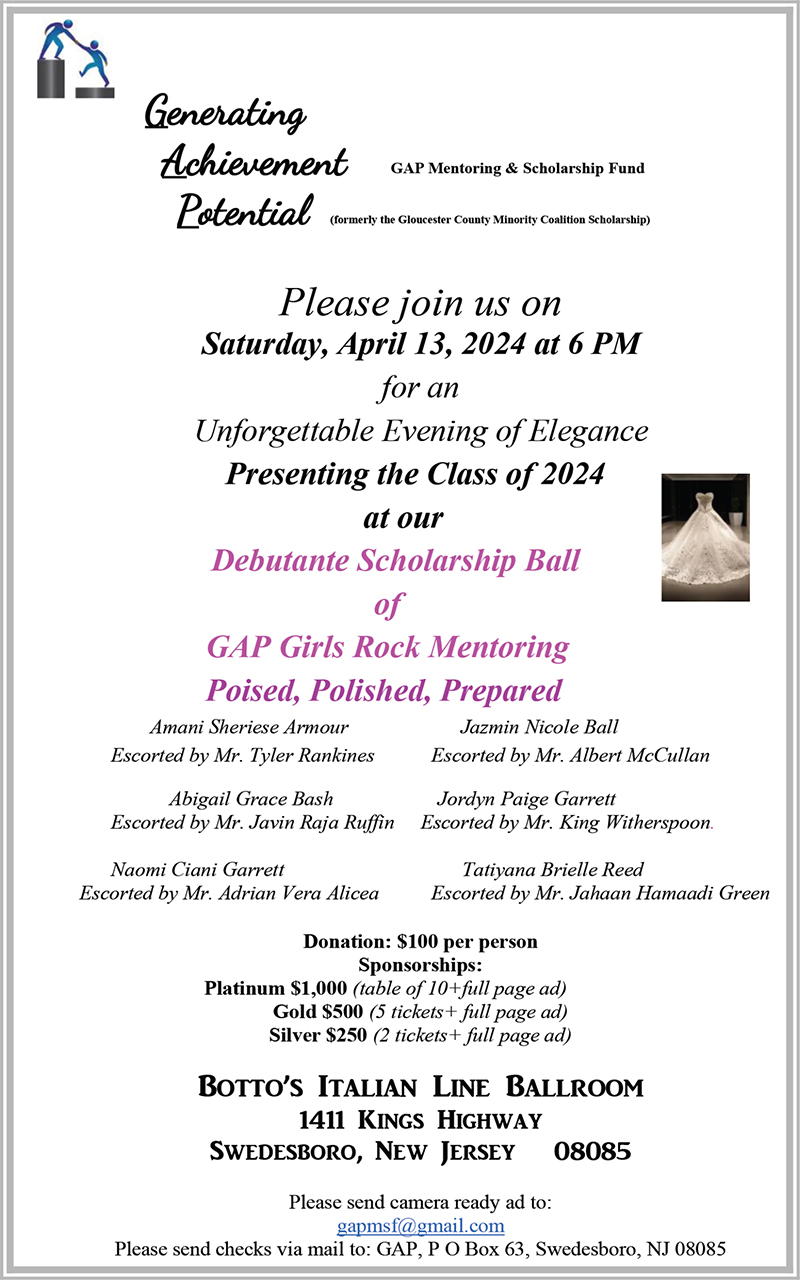Sometimes if you’re walking past the beautiful old stone structure of St. Clare of Assisi Church in Swedesboro, if the wind is quiet and the traffic on Broad Street is slow, if the hour is right, you can hear the fulsome, sonorous, enveloping sounds of the church’s heritage Estey pipe organ. From your head to your heart the sound will vibrate, and likely you will smile.

It’s also likely that Sara Picciano is responsible for the moment of delight. As organist at the keyboard, Picciano, of South Harrison, coaxes the keys and orders the organ’s sounds to serve musical accompaniment to the mass and to the message from the altar.
Actually, she can’t see the altar, except with small mirrors on either side of the music stand. Picciano is seated in the choir loft, on the organ bench facing the instrument and its massive, golden-hued pipes. In a nod to beauty, the pipes are situated just below a classic stained-glass window. Picciano can see the window with every lift of her head.
But it is not the window that concerns her as she sits at the instrument she has played for years, for decades of years, volunteering her time and talent for the services. She is fearful for the organ itself. It has begun to screech a bit, to moan now and then, to prolong a note without being asked.
“It needs,” she said, “some rebuilding, repairs,” although right now the need is more apparent to Picciano than to the parishioners, most of whom do not play organ. “It will only get worse.” She estimates the repairs will cost $6,000 to $8,000, a sum difficult for a suburban church that seats 300 to come by, no matter how valuable the organ.
Picciano did not study the organ. She has been playing piano since she was seven and hoped one day to become a concert pianist. She holds a degree in music education and began teaching piano upon graduation from Shenandoah College and Conservatory of Music in Virginia.
It was a logical progression. “I had a toy piano when I was seven and told my mom and dad, ‘I want a real piano’, and they rented one. They didn’t think I’d stick with it. But we kept it so long they ended up owning it. It was a Baldwin upright. I still have it.”
Picciano and her family are long-time members of St. Clare of Assisi. “I’ve been going all my life to the church. My parents were married there when it was St. Joseph Roman Catholic Church. I got married there. In the early ‘70s I was asked to play at the (newly-initiated) Saturday night mass. A friend said if I played piano then I could play the organ.”

In the early ‘80s Picciano became choir director, a position she still holds. The choir, she noted, can hear the problems with the organ, especially since they stand near it during services. As recognition of the degradation of sound increased, Picciano and the choir pushed for repairs and became a committee to plan fundraising events to save the organ.
Chief of those fundraising events is a Harvest Dance to be held at the rectory Oct. 14, with a DJ, roast beef dinner, homemade desserts, and more. Ideas for further Save the Pipe Organ events are in the works, Picciano said, including a ‘battle of the organs’ where local organists will play.
The hard part, Picciano is finding, is convincing people the organ is worth this effort. “When I said to the choir, ‘Will you help me with fundraisers?’ they all said ‘Yes.’ They could hear the screeching sound, too. But it is not as apparent yet in the rest of the church.”
The Estey organ Picciano plays was built for the church, then St. Joseph’s, to fit the back wall and spread its sound outward, perfectly balanced, to the pews. The church, she said, was built in 1925 and the Etsey, a famous name in organs, accompanied the first Easter Mass the next year. It underwent repairs to the leathers that control the pipes in the 1970s, but after nearly 50 years, those leathers are again drying out.
New technology can repair the defects with better materials that could keep the organ performing another 100 years, said organ expert Dr. Ted Kiefer of Franklinville. The Dr. stands for ‘doctorate of organ performance’, and, when asked, Kiefer said he is one of “about 50 people in the U.S. with a doctorate in organ.”
Yes. It’s a real thing,
He is familiar with the St. Clare organ, and has his own reasons for believing the Estey should be repaired. “The organ in that church sounds beautiful,” he said. “The acoustics in that church are to die for. It is priceless: In that room, in that church, the sound is beautiful, magnificent. It’s a sweet sound and a powerful sound. It just, right now, has some mechanical issues.
“Investment (in repairs) will pay for itself many times over and could last a century.”
Elena Brandt, pastoral associate of music and liturgy for the church, and who also holds a degree in organ, added a different dimension to the logic of preserving the organ. “It’s a historic musical treasure,” she said. “Usually instruments like this get discarded when they are too old and expensive to repair. This organ was designed as a simple instrument for that space.”
It has, perhaps, achieved tradition status, Brandt suggested, when she noted that the organ, “has been an unimposing presence for emotional support at the important times of people’s lives, good or bad. It has shared the joys and sorrows. I think it is significant that people want to see this instrument saved, to hold on to memory and tradition.”
The sentimental value is, if not in the forefront of church members’ minds, important to the parish itself. Father Grover, priest at St. Clare’s, said, “The organ, has great meaning to our parishioners. In Catholic liturgy for the last 100 to 150 years, the organ is the central Catholic instrument. The organ and the voice of the people have been part of the Church for many centuries. And this organ was designed and built for St. Joseph’s (now St. Clare’s) in Swedesboro.”
Swedesboro Councilwoman JoAnna Gahrs was baptized at St. Joseph’s and is a choir member at St. Clare’s. She wants to save the organ for its local history, “My grandparents, my parents, we all went to St. Joseph’s”, she said.
She wants to save it, too, for its musical value, its uniqueness. “Many people take the organ for granted, but new members come in and they recognize right away the difference between our pipe organ and the electric organs of most churches today,” Gahrs said.
“Our sound has such a dimension and depth. It impresses them. When they hear it first begin to play, they turn around and look, like, ‘Wow! Where’s that sound coming from?’”
But foremost, Gahrs speaks of the emotional component of the venerable organ. “The organ adds emotion to what’s going on, to the reflection in the service. I think it can touch people’s heartstrings. Think about the ‘Ave Maria’ rising up during the Mass at a wedding, when the bride is presenting flowers to the statue of Mary. It wouldn’t be the same without the pipe organ. No. No. It wouldn’t.”
On such a note, think about the Christmas service, when Picciano plays what she said is her favorite song, “Joy to the World”, hitting the crescendo pedal which “pulls out all stops for full booming sound.” Think, too, Picciano added, about the complex tonals that accompany the sorrow of a funeral mass.
“The organ plays at ecumenical services, Thanksgiving services where people from many churches attend,” Picciano continued. “It has played for sacraments, holy communions, confirmations, baptisms. It played for the funeral of Maureen Lavin, the 14-year-old girl shot some 20 years ago at Deptford Mall. I played it. It was very sad.
“The organ has played for all life’s stages: weddings, ordinations, visiting dignitaries; for holidays of joy and days of sorrow. I recently spoke to a man who remembered how the organ sounded at his wedding. People remember the feelings. That’s what makes the organ important.”
To order tickets to the Harvest Dance Oct. 14 at the rectory, call Sara Picciano at 609-374-0922. Interested in helping with or donating to fundraising? Call that same number. You will be welcomed.
By Jean Redstone












